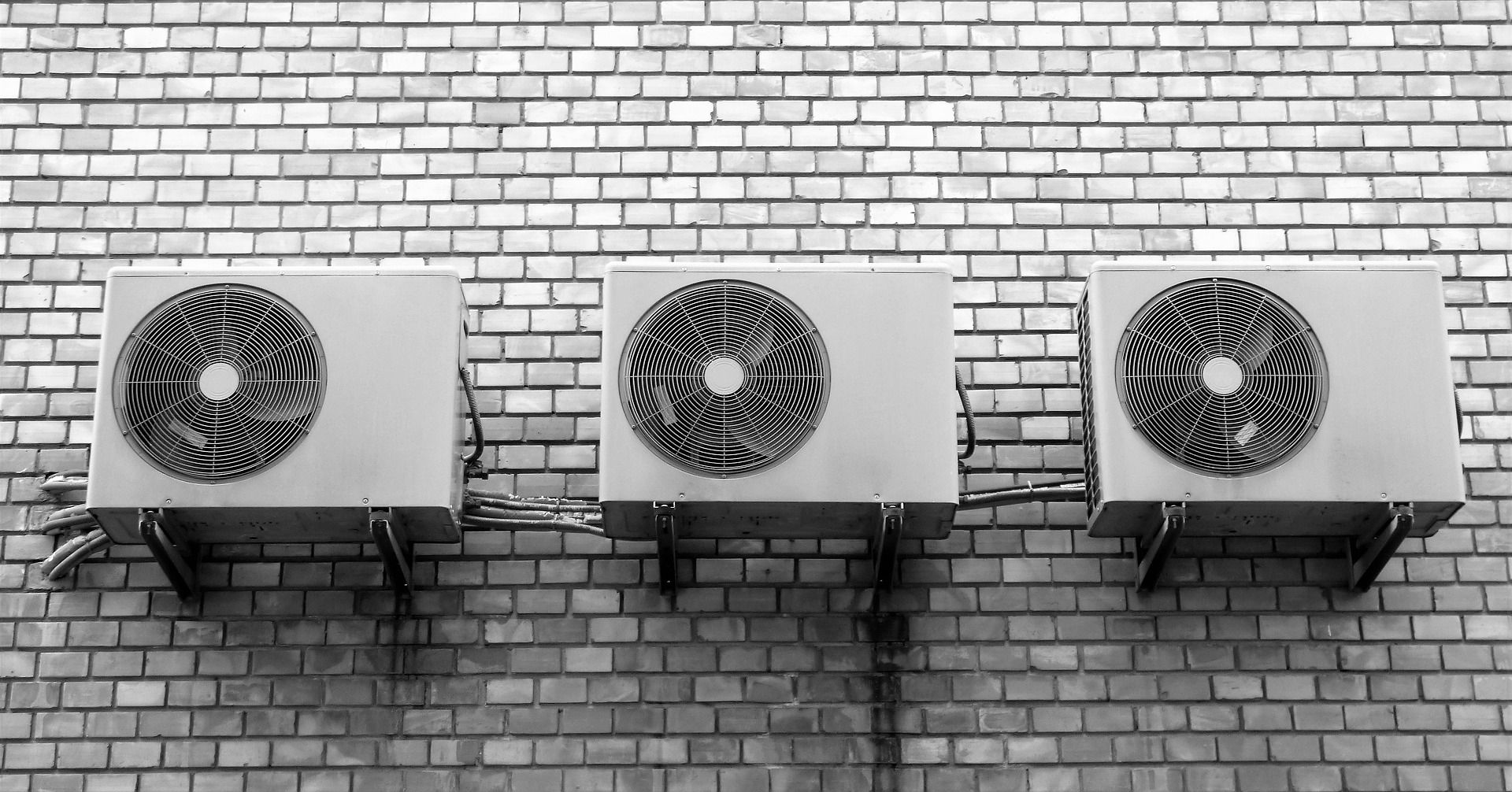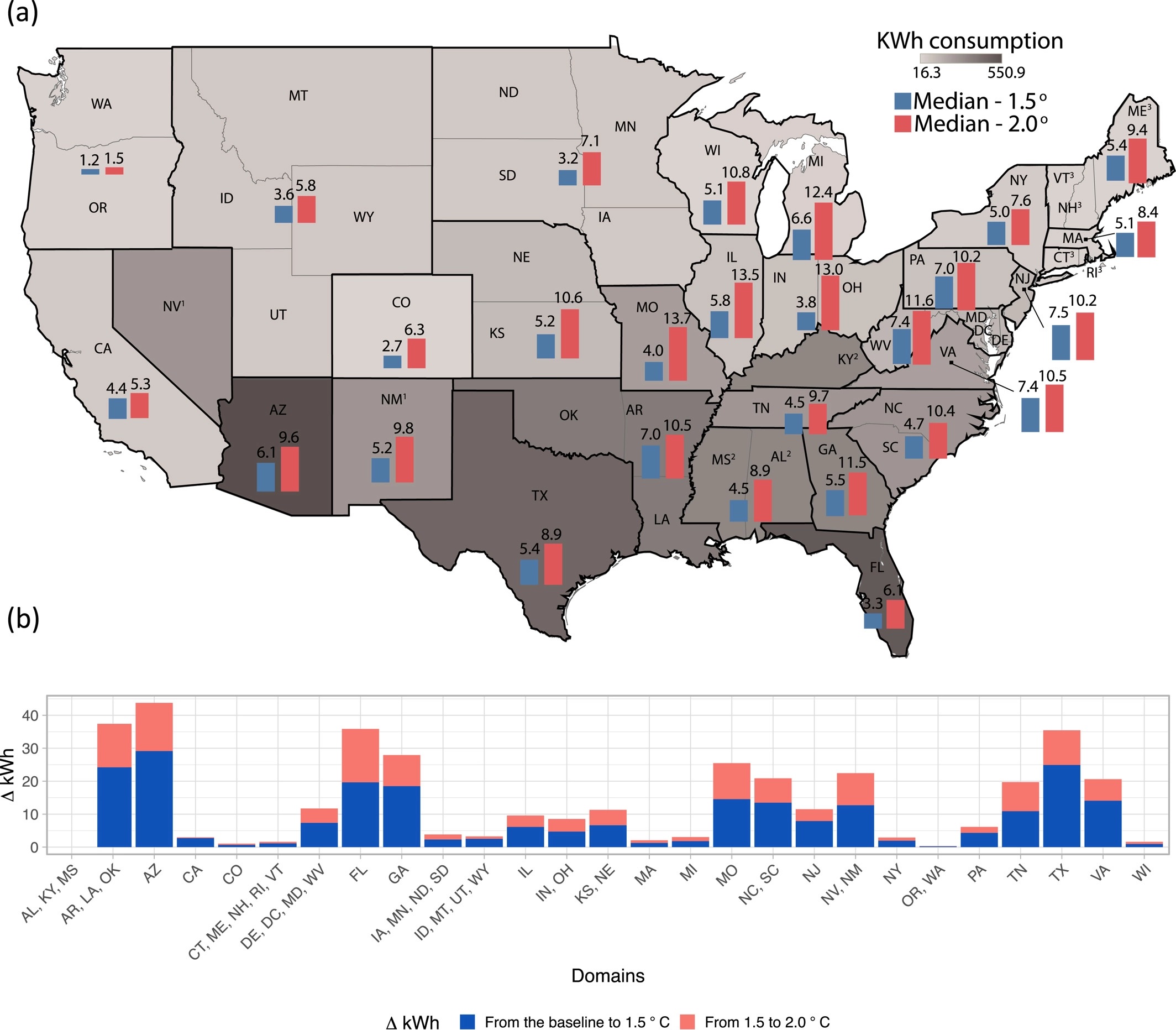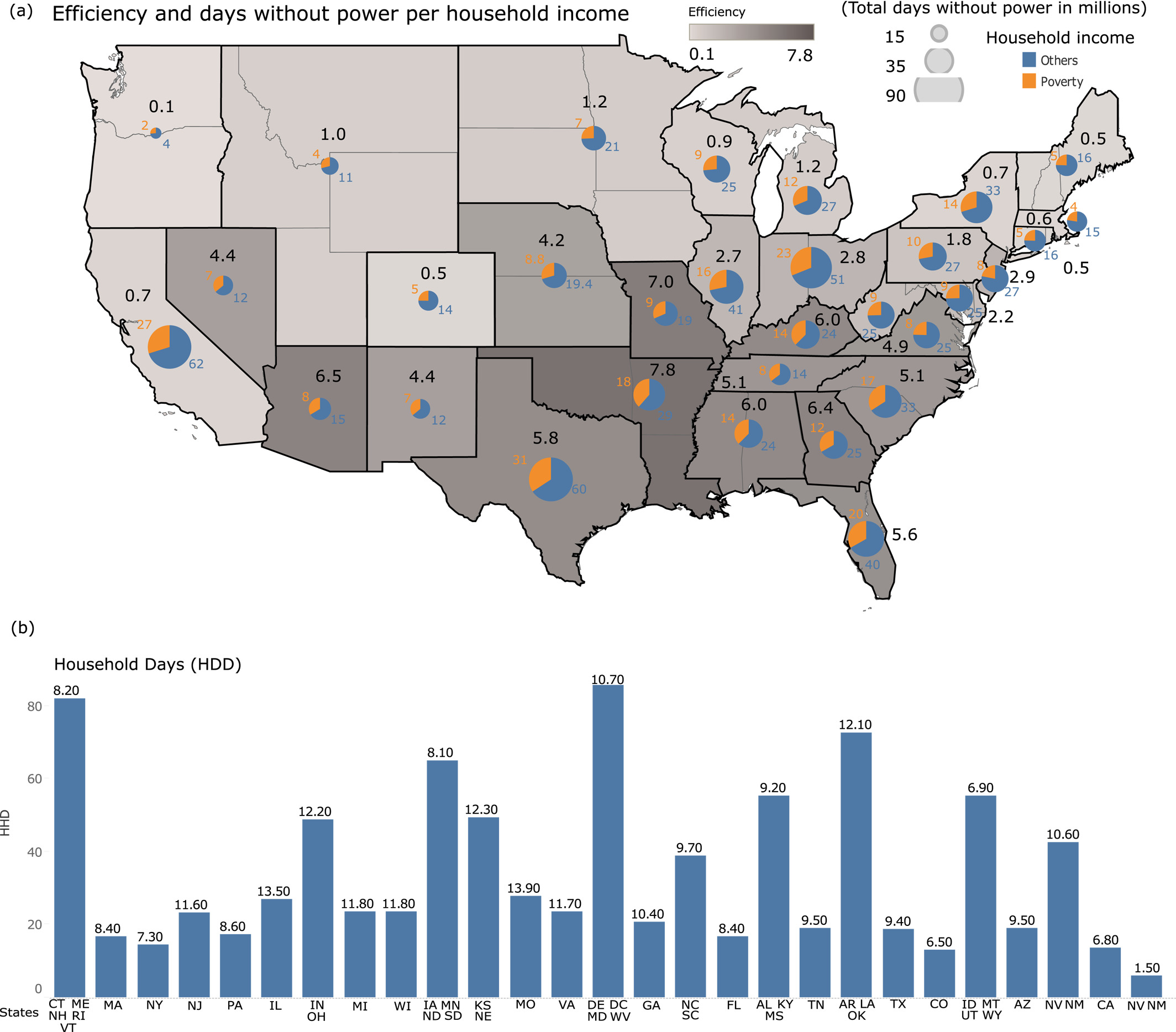Average U.S. households can expect up to 8 days without air conditioning during summer heat if steps are not taken to expand capacity, increase efficiency and mitigate climate change
3 February 2022

Credit: matuska, pixabay
AGU press contact:
Liza Lester, +1 (202) 777-7494, [email protected] (UTC-4 hours)
Contact information for the researchers:
Renee Obringer, Penn State University, [email protected], (UTC-4 hours)
- An 8% increase in summer air conditioning demand can be expected in the U.S. when the global average temperature exceeds 1.5 degrees Celsius above pre-industrial levels.
- Heaviest air conditioning use with the greatest risk for overloading the power grid comes during heat waves, which also present the highest risk to health.
- Households in some Midwestern states could experience 12 summer days without air conditioning in a 1.5-degree Celsius warmer world.
WASHINGTON—Climate change will drive an increase in summer air conditioning use in the United States likely to cause prolonged blackouts during peak summer heat if states do not expand capacity or improve efficiency, according to a new study of household-level demand.
The study projected summertime usage as global temperature rises 1.5 degrees Celsius (2.7 degrees Fahrenheit) or 2.0 degrees Celsius (3.6 degrees Fahrenheit) above preindustrial levels, finding demand in the United States overall could rise 8% at the lower and 13% at the higher threshold. The new study was published in Earth’s Future, AGU’s journal for interdisciplinary research on the past, present and future of our planet and its inhabitants.
Human emissions have put the global climate on a trajectory to exceed 1.5 degrees Celsius of warming by the early 2030s, the IPCC reported in its 2021 assessment. Without significant mitigation, global temperatures will likely exceed the 2.0-degree Celsius threshold by the end of the century.

Household air conditioning use in the United States. Bar graphs show the predicted change in kilowatt-hour consumption per household, by state, as global climate crosses 1.5 degrees Celsius (blue) and 2.0 degrees Celsius (pink) thresholds above preindustrial temperature averages. States shaded darker grey over the map of the contiguous United States consumed more air conditioning during the baseline period from 2005-2019. Grey shading over the map of the contiguous United States shows baseline air conditioning consumption in kilowatt-hours per household, by state, from 2005-2019.
Credit: Obringer et al 2021 Earth’s Future https://doi.org/10.1029/2021EF002434
Previous research has examined the impacts of higher future temperatures on annual electricity consumption or daily peak load for specific cities or states. The new study is the first to project residential air conditioning demand on a household basis at a wide scale. It incorporates observed and predicted air temperature and heat, humidity and discomfort indices with air conditioning use by statistically representative households across the contiguous United States, collected by the U.S. Energy Information Administration (EIA) in 2005-2019.
The new study projected changing usage from climate influence only, and did not consider possible population increases, changes in affluence, behavior or other factors known to affect air conditioning demand.
“We tried to isolate just the impact of climate change,” said Renee Obringer, an environmental engineer at Penn State University and lead author of the new study. “If nothing changes, if we, as a society, refuse to adapt, if we don’t match the efficiency demands, what would that mean?”
Technological improvements in the efficiency of home air conditioning appliances could supply the additional cooling needed to achieve current comfort levels after 2.0 degrees global temperature rise without increased demand for electricity, the new study found. Increased efficiency of 1% to 8% would be required, depending on existing state standards and the expected demand increase, with Arkansas, Louisiana and Oklahoma on the high end.
“It’s a pretty clear warning to all of us that we can’t keep doing what we are doing or our energy system will break down in the next few decades, simply because of the summertime air conditioning,” said Susanne Benz, a geographer and climate scientist at Dalhousie University in Halifax, Nova Scotia, who was not involved in the new study.
Exceeding capacity
The heaviest air conditioning use with the greatest risk for overloading the power grid comes during heat waves, which also present the highest risk to health. Electricity generation tends to be below peak during heat waves as well, further reducing capacity, Obringer said.
Without enough capacity to meet demand, energy utilities may have to stage rolling blackouts during heat waves to avoid grid failure, like California’s energy providers did in August 2020 during an extended period of record heat sometimes topping 117 degrees Fahrenheit.
“We’ve seen this in California already—state power suppliers had to institute blackouts because they couldn’t provide the needed electricity,” Obringer said. The state attributed 599 deaths to the heat, but the true toll may have been closer to 3,900.
The consequences of cascading electrical grid failures are likely to impact already vulnerable populations, including low income, non-white and older residents, first, Obringer noted.
“When they say there’s going to be two weeks where you don’t have cooling on average—in reality, some people will have cooling. Disadvantaged people will have less cooling,” Benz said.
Regional differences
The new study predicted the largest increases in kilowatt-hours of electricity demand in the already hot south and southwest. If all Arizona households were to increase air conditioning use by the estimated 6% needed at 1.5 degrees Celsius of global warming, for example, amounting to 30 kilowatt-hours per month, this would place an additional 54.5 million kilowatt-hours of demand on the power grid monthly.
Some of the highest percentage increases over current demand can be expected in Midwestern states, which could strain energy capacity in the region. The added demand of global temperature rise from 1.5 degrees Celsius to 2.0 degrees Celsius could triple demand in Indiana and Ohio, underlining the importance of mitigation to limit temperature increases, Obringer said.

Darker grey states will need larger technical improvements in cooling efficiency to offset increased demand in a climate that is 2.0 degrees Celsius warmer (percentage in black numerals). Blue bars compare the number of household-days without air conditioning by state or region, also represented as pie charts on the map, if power supply air conditioner efficiency remain at current levels.
Credit: Obringer et al 2021 Earth’s Future https://doi.org/10.1029/2021EF002434
###
AGU (www.agu.org) supports 130,000 enthusiasts to experts worldwide in Earth and space sciences. Through broad and inclusive partnerships, we advance discovery and solution science that accelerate knowledge and create solutions that are ethical, unbiased and respectful of communities and their values. Our programs include serving as a scholarly publisher, convening virtual and in-person events and providing career support. We live our values in everything we do, such as our net zero energy renovated building in Washington, D.C. and our Ethics and Equity Center, which fosters a diverse and inclusive geoscience community to ensure responsible conduct.
Notes for Journalists:
Earth’s Future is open access. Download a PDF copy of the paper here. Neither the paper nor this press release is under embargo.
Paper title:
“Implications of Increasing Household Air Conditioning Use Across the United States Under a Warming Climate”
Authors:
- Renee Obringer, (corresponding author), Department of Energy and Mineral Engineering, The Pennsylvania State University, State College, PA, USA
- Roshanak Nateghi, School of Industrial Engineering, Purdue Climate Change Research Center and Purdue Center for the Environment, Purdue University West Lafayette, IN, USA
- Debora Maia-Silva, Environmental and Ecological Engineering, Purdue University, West Lafayette, IN, USA
- Sayanti Mukherjee, Department of Industrial and Systems Engineering, University at Buffalo-The State University of NY, Buffalo, NY, USA
- Vineeth C R, Cequence Security, Inc., Sunnyvale, CA, USA
- Douglas Brent McRoberts, Department of Geography, Ohio State University, Columbus, OH, USA
- Rohini Kumar, (corresponding author) Department Computational Hydrosystems, Helmholtz Centre for Environmental Research-UFZ, Leipzig, Germany
Additional resources:
- Rising heat in a changing climate—AGU Fall Meeting 2021
- US-wide, non-white neighborhoods are hotter than white ones
- Heat stress in U.S. may double by the end of the century
- Northern Hemisphere summers may last nearly half the year by 2100
- What Five Graphs from the U.N. Climate Report Reveal About Our Path to Halting Climate Change